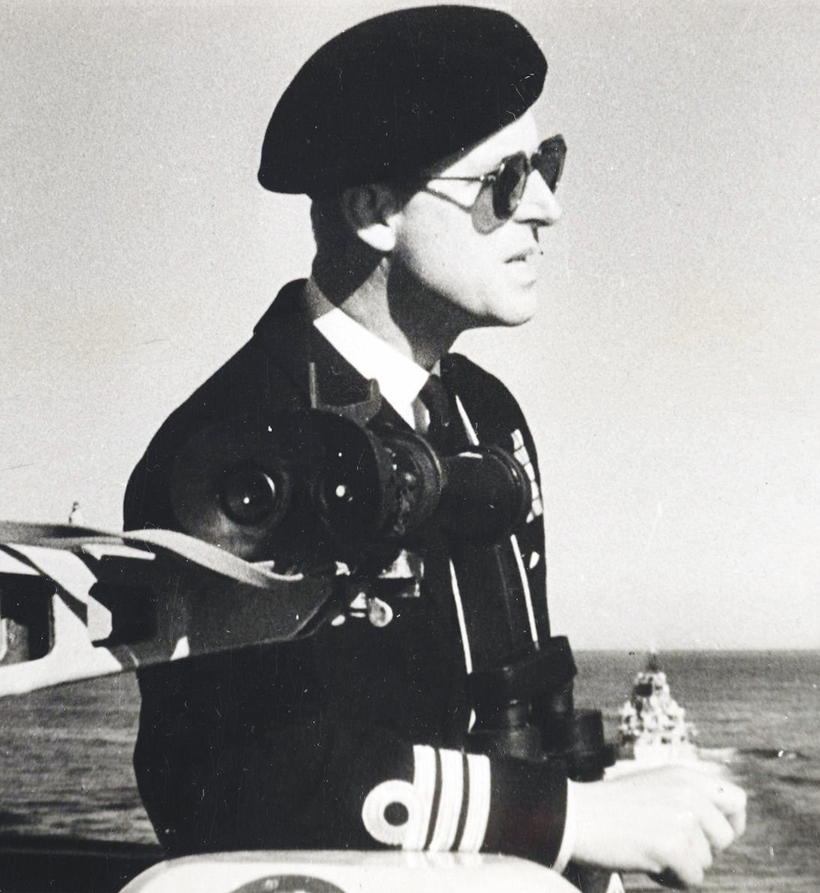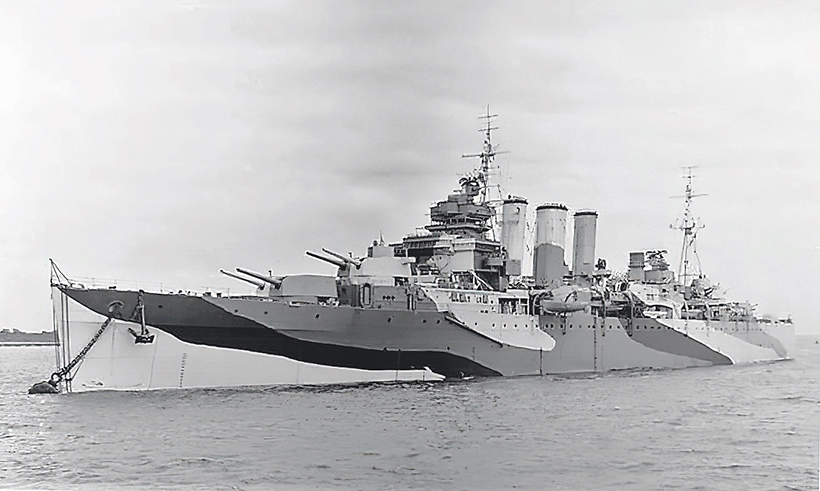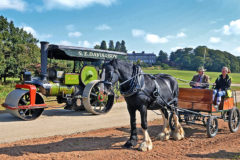Prince Philip’s naval ships
Posted by Chris Graham on 24th November 2021
Paul Brown describes the 14-year Royal Navy career of the late Prince Philip, who became HRH The Duke of Edinburgh.
Prince Philip’s ships: HMS Valiant was a Queen Elizabeth class battleship completed by Fairfield, at Govan, in 1916. She was extensively modernised at Devonport Dockyard in 1937-1939 and finally sold for scrapping in 1948.
Following the recent death of HRH The Duke of Edinburgh, tributes to his life showed how involved he had been with the Royal Navy. In 1939, with Britain on the brink of war with Germany, the young Prince Philip expressed a wish to join the RAF. It was the intervention of his uncle, Louis Mountbatten, then captain of HMS Kelly, that persuaded him to follow his family’s long naval tradition, and he entered the Royal Naval College, Dartmouth, as a cadet in 1939, passing out at the beginning of 1940 as a midshipman, after eight months’ training. He had excelled, receiving the prize for best cadet of his entry.

Prince Philip, during his naval service.
Greece remained neutral at the outbreak of war and Philip, as a potential heir to its throne and technically a foreigner, was initially kept away from battle zones. But in January 1940 Cdr Mountbatten pulled some strings and got his nephew posted to the battleship Ramillies. He spent four months on her, protecting convoys of the Australian Expeditionary Force in the Indian Ocean, which were carrying Australian troops from Australia to Egypt.
HMS Kent was built at Chatham Dockyard, engined by Hawthorn Leslie, Hebburn, and completed in 1928. Like Ramillies, she was employed in the Indian Ocean escorting troop convoys until August 1940 when, with Italy having entered the war, she was transferred to the Mediterranean. In the following month she was damaged by an aerial torpedo bomber attack and, after temporary repairs at Alexandria, had to return to the UK for permanent repairs. She was then employed in the Home Fleet, including escorting Arctic convoys. She was sold for scrapping in 1948.
After serving on Ramillies, Prince Philip had successive short spells in the County class heavy cruisers Kent and Shropshire in the Asia-Pacific region, and in Ceylon. After the invasion of Greece by Italy in October 1940, and Greece having entered the war on the allied side, it was decided that Philip could now serve in the Mediterranean theatre. Leaving HMS Shropshire, he was appointed to the battleship HMS Valiant, in the Mediterranean.
HMS Ramillies was a Royal Sovereign class battleship built by Beardmore, at Dalmuir, and completed by Cammell Laird, at Birkenhead, in May 1917. She was sold for scrapping in 1948.
On February 1st, 1941, he was commissioned as a sub-lieutenant, after a series of courses at Portsmouth in which he gained the top grade in four out of five sections of the qualifying examination. In Valiant he saw action off North Africa in the Battle of Crete, and the decisive Battle of Cape Matapan, in March 1941, which played a major role in the destruction of the Italian fleet. He was Mentioned in Despatches for ‘bravery and enterprise’ in controlling the battleship’s searchlights during the Matapan night action, which ‘greatly contributed to the devastating results achieved’ by the guns. He was also awarded the Greek War Cross of Valour.

HMS Shropshire was built and engined by Hawthorn Leslie, and completed in 1929. She returned to Britain for a refit in early 1940, before proceeding to the Indian Ocean, where she was employed on convoy cover duties between Capetown, Durban, Mombasa and Aden. She participated in the campaign against Italian Somaliland during 1941, then moved to the South Atlantic theatre. She was transferred to the Royal Australian Navy in 1943, for service in the Pacific against Japanese forces. She was paid off into reserve in 1949 and finally sold for scrapping in 1954.
In June 1942, Philip left Valiant and joined the Shakespeare class destroyer flotilla-leader Wallace, being promoted to lieutenant on July 16th, 1942. Aged 21, he had become one of the youngest first lieutenants in the Royal Navy. Wallace spent most of the year in the hazardous duty of escorting coastal convoys off the UK’s east coast, before being sent to the Mediterranean to support the allied invasion of Sicily in July 1943, where she helped cover the Canadian landings.
HMS Wallace was built by Thornycroft and completed in 1919. Just before World War II she was converted to a fast escort vessel and rearmed. She was sold for scrapping in 1945.
German dive bombers damaged Wallace in a night-time attack. The crew feared they would return in greater numbers and finish them off. Philip proposed launching a makeshift raft, equipped with smoke floats which, in the darkness, fooled the German bomb aimers into thinking this was the damaged destroyer. ‘Philip saved our lives that night,’ said one of the Wallace’s crew, Harry Hargreaves, adding: ‘he was always very courageous and resourceful, and thought very quickly’.
HMS Chequers leaving Malta, for the season’s second summer cruise, on September 4th, 1949. A CH class destroyer, she was built by Scotts, at Greenock, and completed on September 28th, 1945, just too late for the war. She was employed in the Palestine Patrols from 1946 to 1948, during the establishment of the state of Israel, and remained in the Mediterranean Fleet except for a brief deployment to the Persian Gulf in 1951. When scheduled for modernisation, she became a victim of the 1957 defence review and was reduced to reserve at Chatham and then, from 1959, Portsmouth. She was sold for scrapping in 1966.
His commanding officers praised Philip’s practical seamanship skills, high intellect, good judgement, strong character, zeal and great charm. He was described as an ‘officer of unusual promise’ who would ‘make his mark in the Service’.
Philip’s next seagoing appointment, in 1944, was as First Lieutenant – second in command – of the new destroyer HMS Whelp, which sailed to the Far East for the final year of the war with Japan as part of the escort for the capital ships. She supported air raids and bombardments on Japanese shore installations, and was involved in the rescue of British air crew shot down by Japanese fighters.
The Black Swan class frigate Magpie in Malta, where she was based as part of the 2nd Frigate Squadron. Magpie was built by John I. Thornycroft, at Woolston, and commissioned on August 30th, 1943. In the Battle of the Atlantic she contributed to the actions in which her unit, the 2nd Support Group, sank five U-boats. She was paid off in 1958 and was sold for scrapping in the following year.
Aboard Whelp, Prince Philip was present in Tokyo Bay in September 1945 for the formal Japanese surrender, the last act of World War II. The destroyer returned to the UK in January 1946, having helped with the repatriation of allied servicemen. Philip was next posted as an instructor at HMS Royal Arthur, the Petty Officers’ School in Corsham, Wiltshire. He spent the three and a half years ashore at various naval establishments, helping to train new recruits and petty officers, a period which included his marriage to Princess Elizabeth in November 1947.
After his honeymoon in 1947, and now with the title Duke of Edinburgh, Philip returned to the Navy and a desk job at the Admiralty, and was then at the Naval Staff College, Greenwich. On October 15th, 1949 he returned to sea as first lieutenant of the destroyer Chequers (leader of the 1st Destroyer Squadron) in the Mediterranean, and the royal couple lived in Malta between 1949 and 1951.
The W class destroyer HMS Whelp, built by Hawthorn Leslie and commissioned on April 25th, 1944, under way on the Tyne in 1944. Whelp was transferred to the South African Navy in 1952 and was renamed Simon van der Stel, being sold for scrapping in 1976.
After being promoted to lieutenant commander in July 1950, the Duke was given his first sea-going command, 11 years after joining the Royal Navy. He commanded the frigate HMS Magpie from September 1950 until July 1951, taking her to ports around the Mediterranean, including Izmir, Livorno, Tripoli, Athens, Monaco and Gibraltar. But, within a year, Philip’s naval career was over, as he had to support Princess Elizabeth when she took on more royal duties as the King’s health declined. The Duke of Edinburgh’s active naval career ended with the rank of commander in January 1953, after almost 14 years.
For a money-saving subscription to Ships Monthly magazine, simply click here





